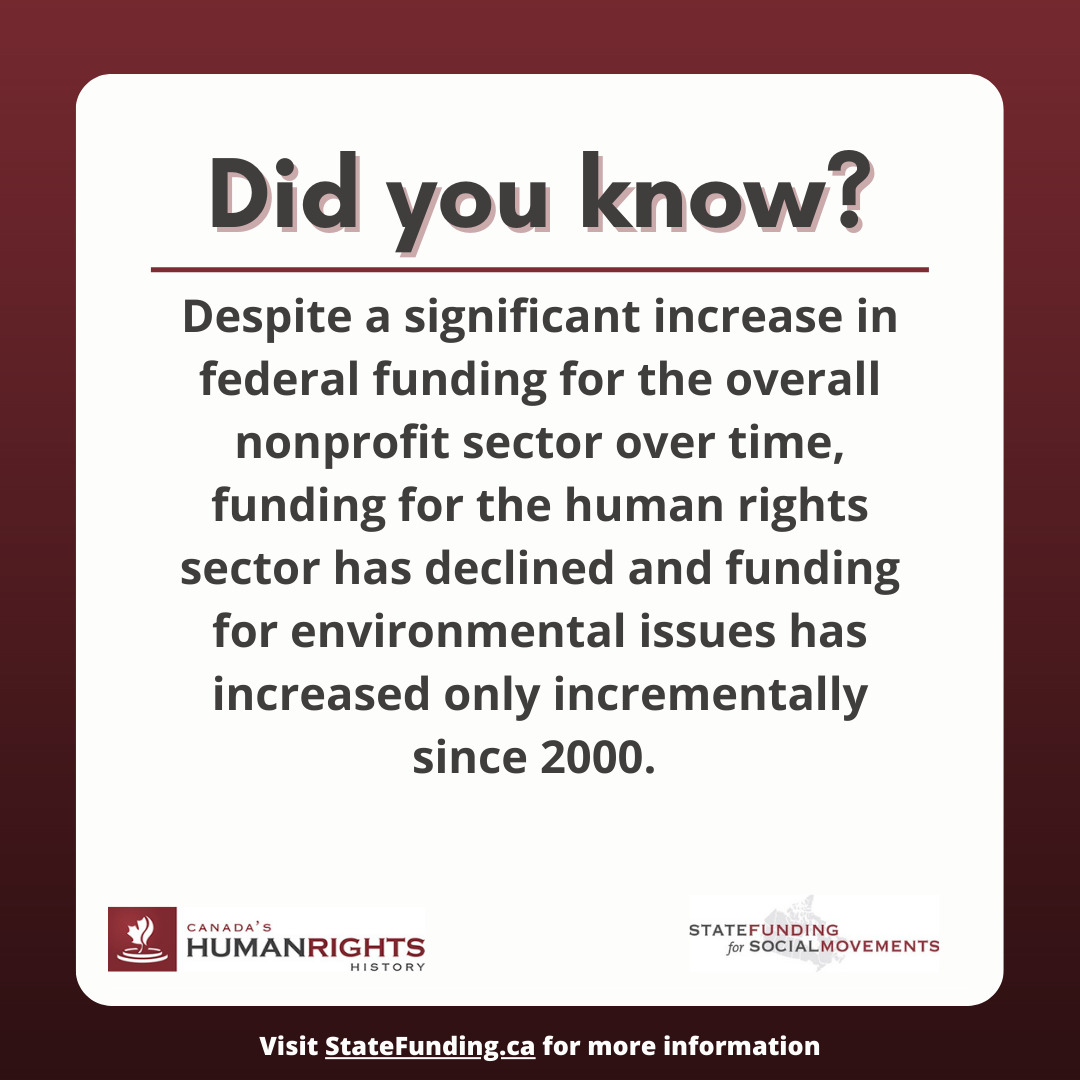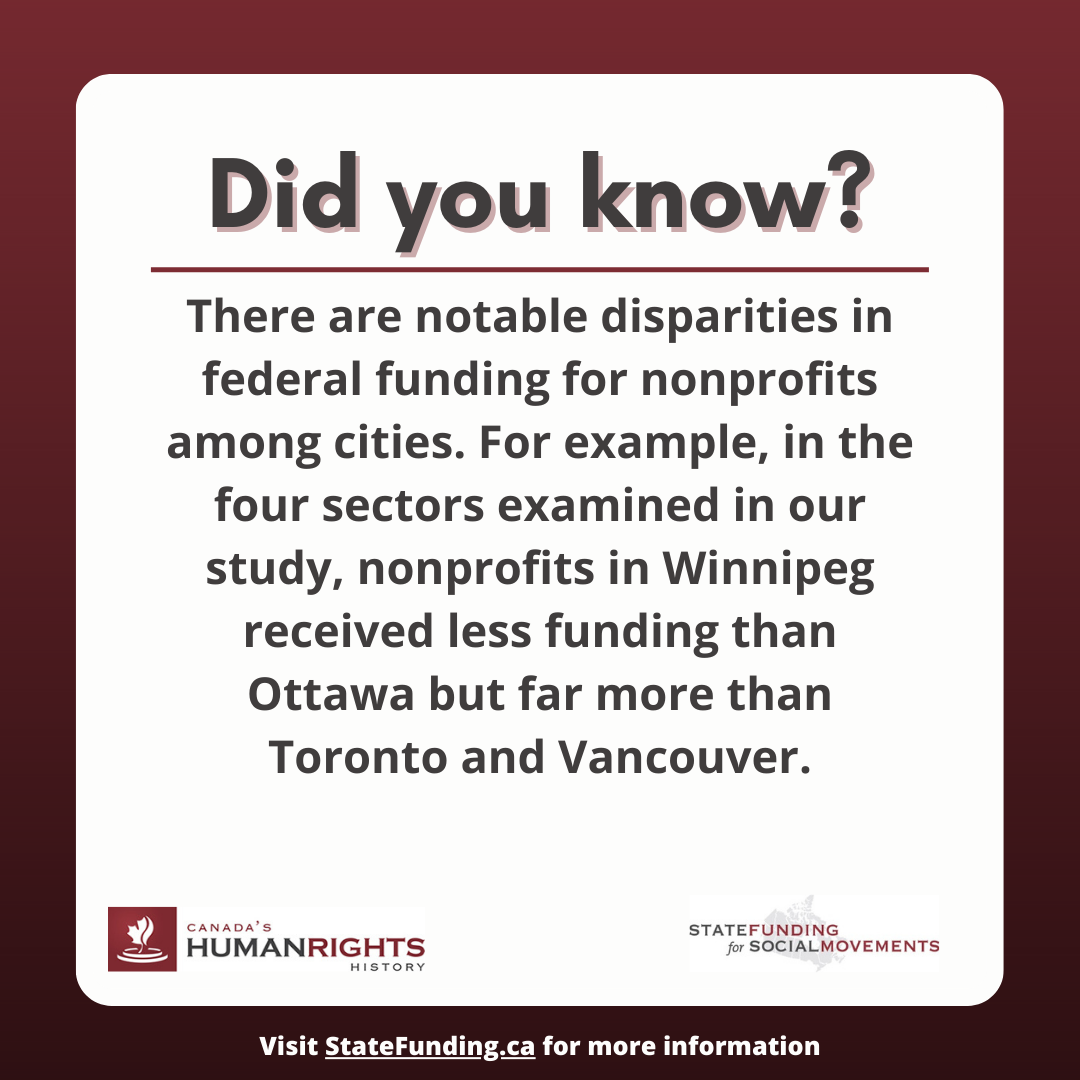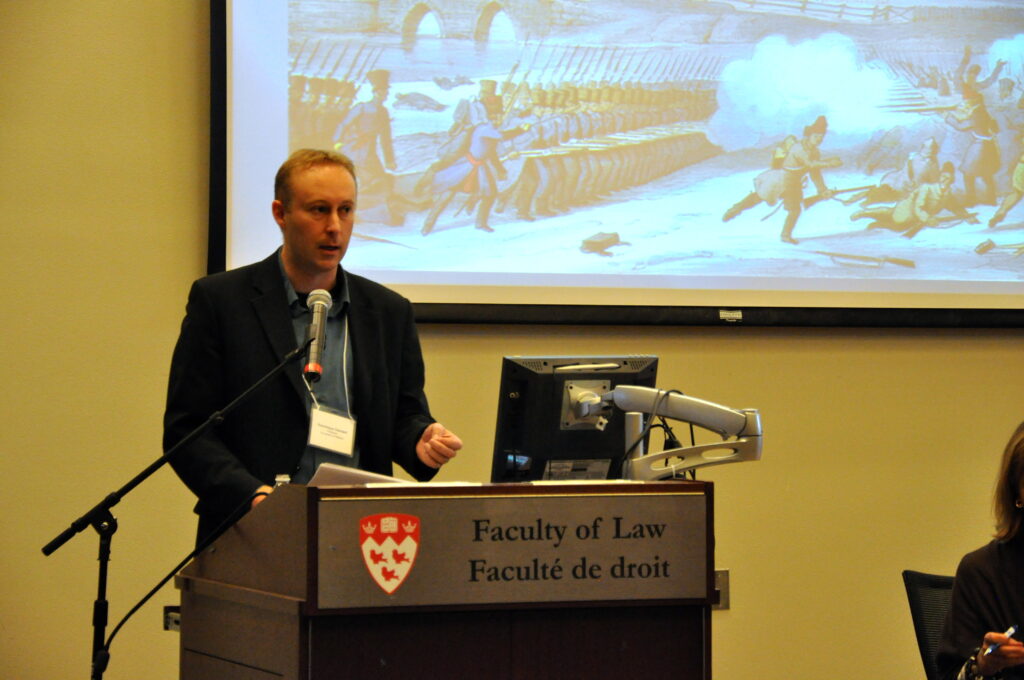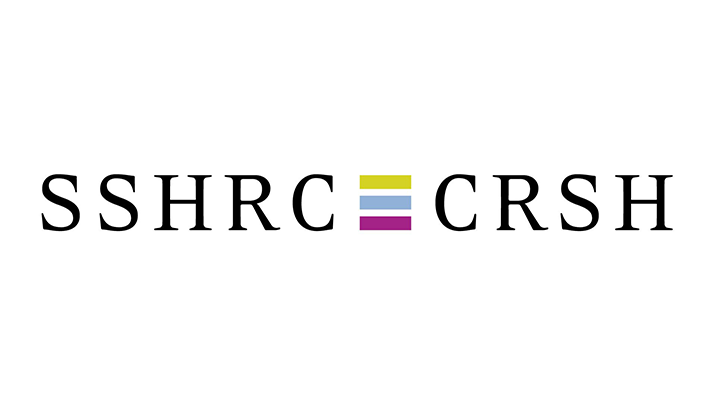Our project examined the history of state funding for social movements in Canada and how the relationship between state funding and social movements differs across movements, regions, and time periods. NGOs have a long history in Canada of dependence on public funding. But there is little evidence on the extent of state funding for NGOs. We endeavoured to document how state funding has shaped Canada’s nonprofit sector. We began by collecting data from Public Accounts – an annual publication of federal and provincial governments that includes a detailed budget of government finances. Public Accounts is the most reliable source for identifying transfer payments to NGOs.

To create a searchable database, our team digitized and processed over 20,000 pages using digital cameras and Book2Net scanners, AbbyFineReader (optical-text recognition software), Google’s OpenRefine and FileMaker. Phase I, which is complete, was to collect data on transfer payments to NGOs from the federal, British Columbia and Nova Scotia governments between 1960 and 2014 for the following sectors: the environment, human rights, Indigenous peoples, and women. Phase II, which is in progress, is to secure large datasets from federal, provincial and municipal governments on transfer payments to NGOs in all sectors. We have also partnered with the University of Alberta Library to expand our scanning of Public Accounts to include most Canadian provinces.

The database is a unique resource that researchers can use to explore a variety of issues impacting the nonprofit sector including the diversity of Canada’s voluntary sector; how funding practices differ across movements, regions, and time periods; how funding has fluctuated over time and under what conditions; the way the state privileges issues or organizations; and much more. The data can also be used to address broader research questions such as: What factors explain the state’s intervention into the voluntary sector in the mid-twentieth century? Did state funding coopt social movements? Why did the state privilege some organizations over others? Did the regional distribution of state funding for nonprofits disproportionately benefit some regions over others? What were the implications of state funding on movement activities, strategies for change, and inter-movement networks? How did state funding legitimize the claims of some social actors to the detriment of others?
The Introduction page below as well as this 6 minute video provides information on how to use and navigate the database.
-
Data Entry
Phase I of the project focussed on extracting grants from three jurisdictions (federal, British Columbia, Nova Scotia) that related to four sectors: environment, human rights, Indigenous peoples, and women. The focus was on extracting grants to NGOs (non-governmental organizations) and excluding, for instance, for-profit corporations.…
-
Field Descriptions
Field Descriptions: Additional Information Further information on the individual record. Amount Disbursed The total amount of funding allocated to the grant. If a grant is awarded for multiple years, the total is reported in a single year. [Amount Disbursed – 2014 Inflation: The number in…
-
Introduction
This database is based on an innovative new dataset derived from government budgets. Every year, federal and provincial governments publish audited financial statements titled Public Accounts. Most jurisdictions include a section titled transfer payments or schedule of payments that lists payments to NGOs. Public Accounts…
-
Layouts
Database and Archive Content Phase I of the database is complete. More data will be incorporated into the database as this project evolves over time.









